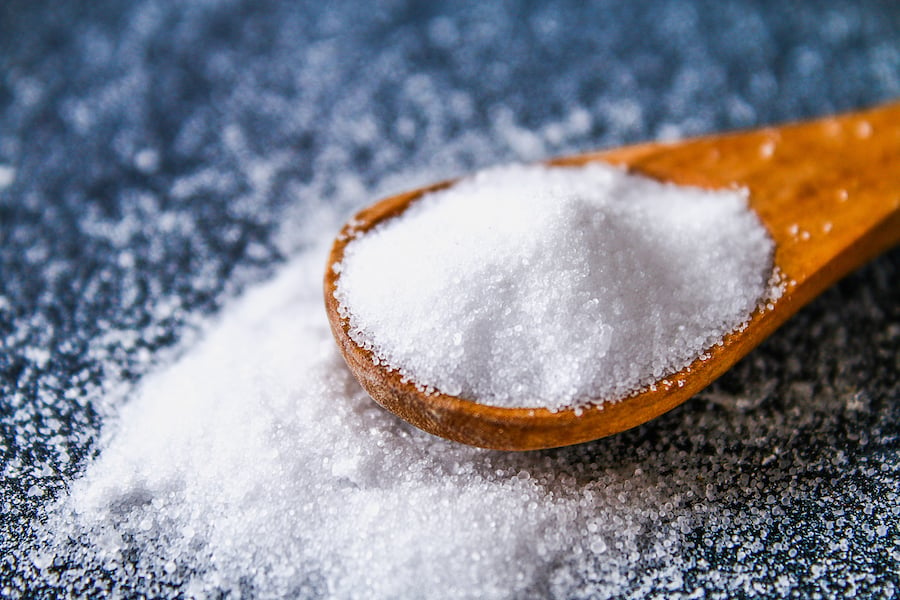 Salt has a bad rap, and for good reason. Excessive sodium intake can do significant damage to a person’s health, putting them at risk for enlarged heart muscles, kidney disease, osteoporosis, stroke, heart failure, high blood pressure and kidney stones.
Salt has a bad rap, and for good reason. Excessive sodium intake can do significant damage to a person’s health, putting them at risk for enlarged heart muscles, kidney disease, osteoporosis, stroke, heart failure, high blood pressure and kidney stones.
According to the World Health Organization, an estimated 2.5 million deaths could be prevented each year if global salt consumption were reduced to recommended levels. The average person ingests 3,400 mg of sodium a day — 50% more than the 2,300mg limit recommended by the FDA.
Americans of all ages consume far more sodium than they should. However, they aren’t doing enough to curb their insatiable appetite for salt on their own. Truth is, it will take much more effort than simply putting down the salt shaker.
That’s why the Food and Drug Administration (FDA) is placing the onus on the food industry, issuing new sodium reduction guidelines for commercially processed, packaged and prepared foods. These types of foods are notoriously high in sodium.
While voluntary, there’s a lot of pressure from food safety organizations, the American Heart Association, government agencies and health-conscious consumers to reduce sodium content. The good news for food processing companies is that they don’t need to go salt-free. The targets issued by the FDA are attainable, calling for only a 12% reduction in the amount of sodium in food products over the next 2.5 years!
Can such a small reduction make a difference? Yes, according to the FDA, stating that “even these modest reductions made slowly over the next few years will substantially decrease diet-related diseases.”
The FDA isn’t alone in calling out the alarm. Even prior to the FDA announcement, a Lancet study highlighted the need for changes to product formulations after one in five deaths were linked to poor diet.
Food formulators are listening and, more importantly, responding. The Global Sodium Reduction Ingredients Market is projected to grow at a robust CAGR of 11.71% during the forecast period (2020 - 2025).
Unfortunately, food manufacturers may not be eager to turn to common “go-to” salt substitutes, since each has issues that need to be overcome.
Read more: 10 Reasons Whey Protein Tip Sheet
Maintaining Flavor
Sodium replacement in food is difficult when trying to maintain the salty notes and flavors it imparts. This is particularly difficult in formulations for condiments, cheesy soups and sauces, and other creamy processed and prepared foods. Replacing sodium with another option, such as potassium chloride, can impart unappealing flavor notes, often described as bitter and metallic.
Maintaining Healthfulness
While salt certainly presents health issues, many of the options available to formulators aren’t much better for consumers. For example, people with certain medical conditions that impair urinary excretion of potassium (such as renal failure and diabetes) may need to limit or altogether avoid foods that contain potassium chloride.
Maintaining Clean Labels
Ingredients like potassium chloride, magnesium sulfate, potassium lactate and calcium chloride — all options for reducing salt in formulations — not only sound unfamiliar and therefore off-putting to consumers, but don’t align with clean label initiatives. Masking ingredients are often added to offset the flavors of these ingredients, adding more “problems” to food labels.
Maintaining Profits
Compared to some alternatives, salt is cheap and readily available. And it tastes great – after all, it’s the hero ingredient in an entire category called “salty snacks!” The options discussed above add more to the overall cost of the product. In the case of potassium chloride, the price is nearly twice that of salt, shrinking already narrow profit margins.
Recent Sodium Reduction Innovation
Formulators are hard-pressed to mimic that unique umami flavor that sodium brings to a wide range of foods. Chemical-sounding ingredients have their own health concerns, and clean label problems make these types of options unpalatable in more ways than one. Some add herbs and spices, lemon juice or other flavor enhancements, but there’s nothing that compares with salt. Or is there?
A recent innovation in the cheese sauce market addresses the full gamut of issues outlined above. All-natural Grande Gusto® is a clean-label whey ingredient that not only allows manufacturers to reduce sodium, but improves nutrition and maintains the signature creamy texture and umami flavor consumers love. It allows food manufacturers to:
- Reduce the use of fresh, powdered and processed cheese
- Minimize storage and handling requirements
- Use a price-stable ingredient
- Rely on a consistent and readily available supply chain
- Use existing food production systems with ease
In one Mac & Cheese side-by-side comparison using Grande Gusto and a control, there was a marked reduction in sodium, fat and calories (3 of the top 4 ingredients consumers monitor for intake). When 38% of the American cheese in the formulation was replaced with Gusto, it achieved:
- 10% less sodium
- 25% reduction in fat
- 15% fewer calories
- Between 10–18% cost saving per serving
Ideal applications for Grande Gusto include cheese sauces, nacho cheese, queso sauces, savory fillings, cheese soups and more.
Learn more about the product improvements made possible by Grande Gusto – contact our team of food formulation experts today by clicking below!





